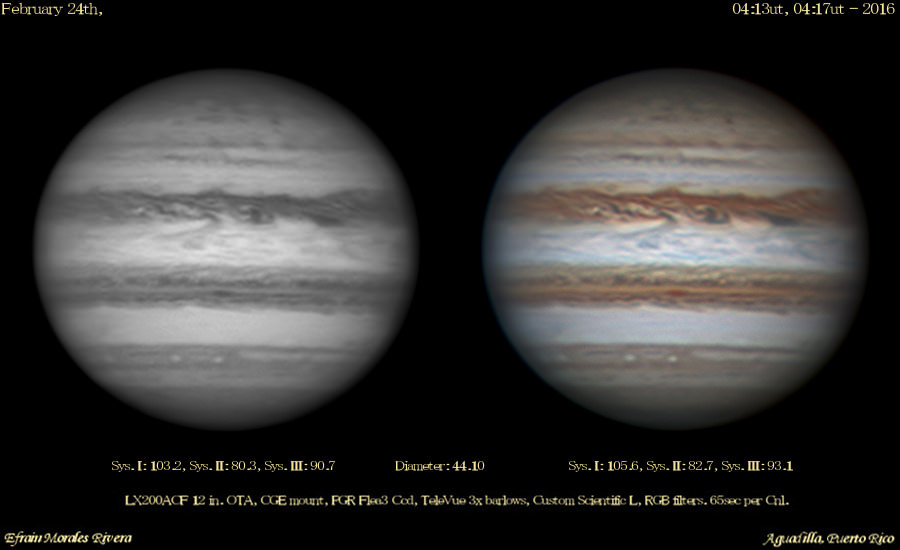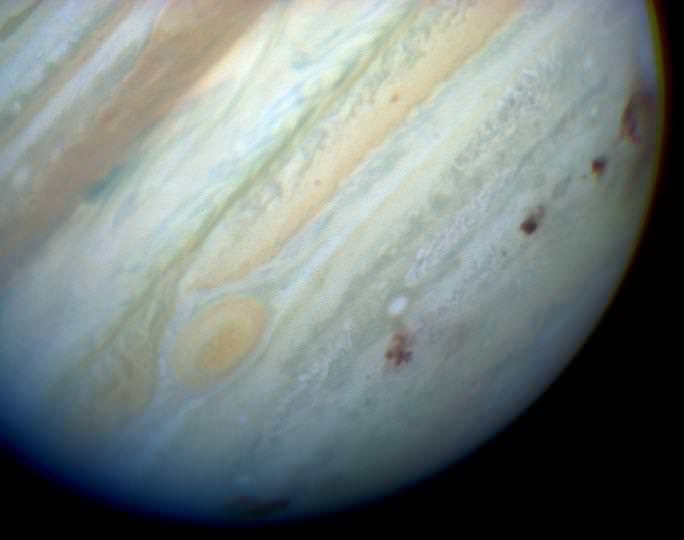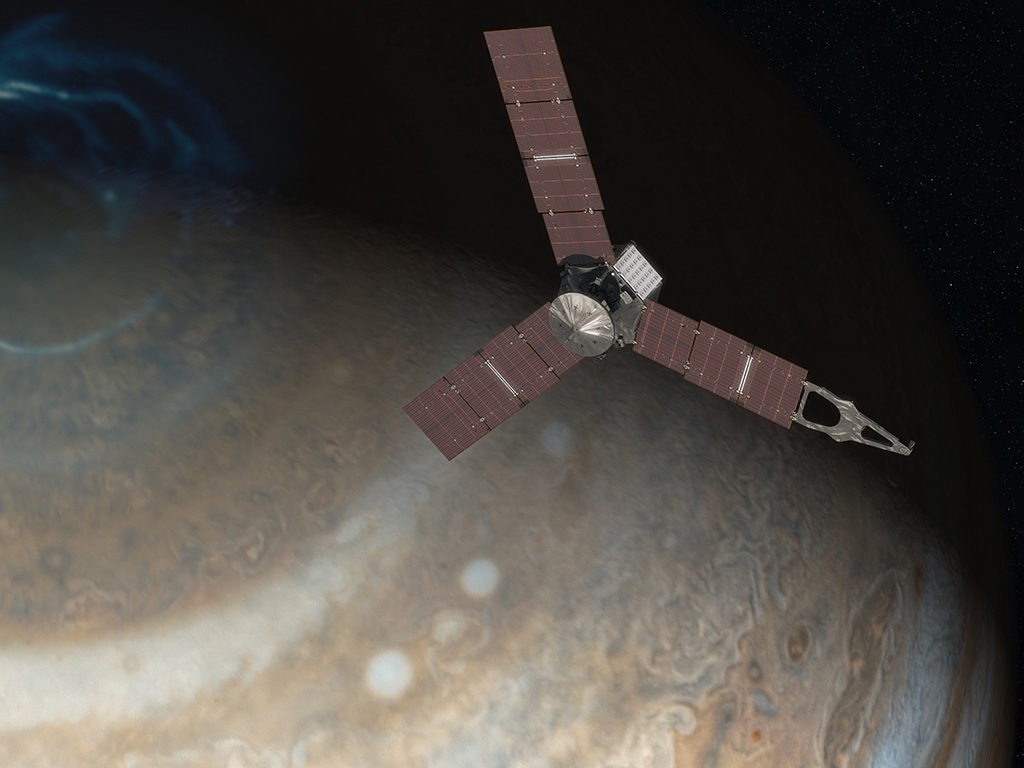Ready to explore the largest planet in our solar system? The month of March heralds the return of Jupiter to evening skies. Early March 2016 sees the planet Jupiter starting off the month less than one degree from the star Sigma Leonis. Continue reading “By Jove: Our 2016 Guide to Jupiter at Opposition”
Weekly Space Hangout – Feb. 26, 2016: Fast Radio Bursts & Missing Baryons
Host: Fraser Cain (@fcain)
Guests:
Kimberly Cartier (@AstroKimCartier )
Dave Dickinson (www.astroguyz.com / @astroguyz)
Jolene Creighton (fromquarkstoquasars.com / @futurism)
Nicole Gugliucci (cosmoquest.org / @noisyastronomer)
Their stories this week:
Mysterious Fast Radio Bursts Solve Missing Baryon Problem
Search Narrows for Planet Nine
Double Shadow Transit Season Begins
Pulsar “Web” search for gravitational waves
Milky Way Survey of Gas and Dust Completed
Scott Kelly to return to Earth on March 1 – why was he in space for a year?
We’ve had an abundance of news stories for the past few months, and not enough time to get to them all. So we’ve started a new system. Instead of adding all of the stories to the spreadsheet each week, we are now using a tool called Trello to submit and vote on stories we would like to see covered each week, and then Fraser will be selecting the stories from there. Here is the link to the Trello WSH page (http://bit.ly/WSHVote), which you can see without logging in. If you’d like to vote, just create a login and help us decide what to cover!
We record the Weekly Space Hangout every Friday at 12:00 pm Pacific / 3:00 pm Eastern. You can watch us live on Google+, Universe Today, or the Universe Today YouTube page.
You can also join in the discussion between episodes over at our Weekly Space Hangout Crew group in G+!
Hubble Directly Measures Rotation of Cloudy ‘Super-Jupiter’

Astronomers using the Hubble Space Telescope have measured the rotation rate of an extreme exoplanet 2M1207b by observing the varied brightness in its atmosphere. This is the first measurement of the rotation of a massive exoplanet using direct imaging.
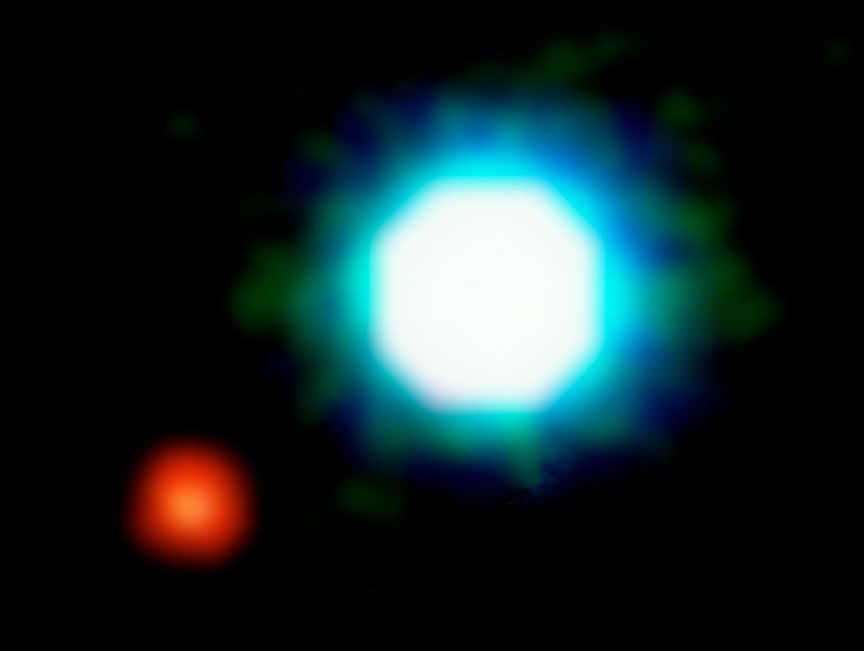
Little by little we’re coming to know at least some of the 2,085 exoplanets discovered to date more intimately despite their great distances and proximity to the blinding light of their host stars. 2M1207b is about four times more massive than Jupiter and dubbed a “super-Jupiter”. Super-Jupiters fill the gap between Jupiter-mass planets and brown dwarf stars. They can be up to 80 times more massive than Jupiter yet remain nearly the same size as that planet because gravity compresses the material into an ever denser, more compact sphere.
2M1207b lies 170 light years from Earth and orbits a brown dwarf at a distance of 5 billion miles. By contrast, Jupiter is approximately 500 million miles from the sun. You’ll often hear brown dwarfs described as “failed stars” because they’re not massive enough for hydrogen fusion to fire up in their cores the way it does in our sun and all the rest of the main sequence stars.
Researchers used Hubble’s exquisite resolution to precisely measure the planet’s brightness changes as it spins and nailed the rotation rate at 10 hours, virtually identical to Jupiter’s. While it’s fascinating to know a planet’s spin, there’s more to this extraordinary exoplanet. Hubble data confirmed the rotation but also showed the presence of patchy, “colorless” (white presumably) cloud layers. While perhaps ordinary in appearance, the composition of the clouds is anything but.
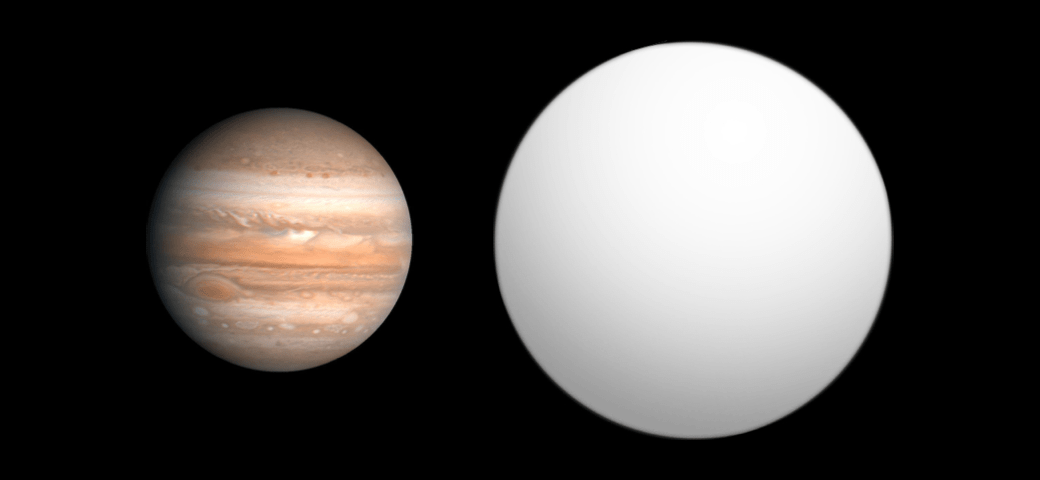
The planet appears bright in infrared light because it’s young (about 10 million years old) and still contracting, releasing gravitational potential energy that heats it from the inside out. All that extra heat makes 2M1207b’s atmosphere hot enough to form “rain” clouds made of vaporized rock. The rock cools down to form tiny particles with sizes similar to those in cigarette smoke. Deeper into the atmosphere, iron droplets are forming and falling like rain, eventually evaporating as they enter the lower levels of the atmosphere.
“So at higher altitudes it rains glass, and at lower altitudes it rains iron,” said Yifan Zhou of the University of Arizona, lead author on the research paper in a recent Astrophysical Journal. “The atmospheric temperatures are between about 2,200 to 2,600 degrees Fahrenheit.” Every day’s a scorcher on 2M1207b.
Both Jupiter and Saturn also emit more heat than they receive from the sun because they too are still contracting despite being 450 times older. The bigger you are, the slower you chill.
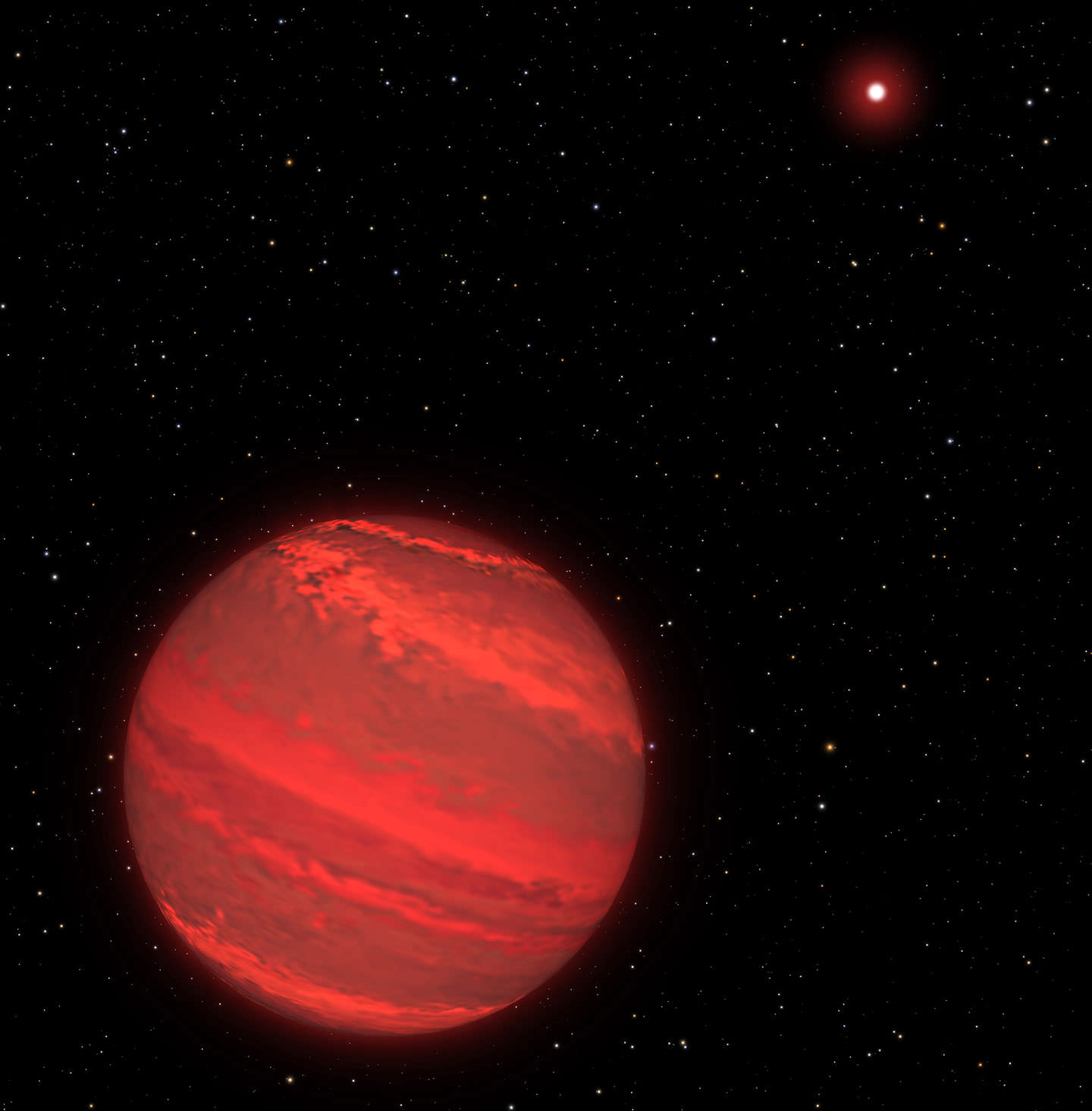
All the planets in our Solar System possess only a fraction of the mass of the Sun. Even mighty Jove is a thousand times less massive. But Mr. Super-Jupiter’s a heavyweight compared to its brown dwarf host, being just 5-7 times less massive. While Jupiter and the rest of the planets formed by the accretion of dust and rocks within a clumpy disk of material surrounding the early Sun, it’s thought 2M1207b and its companion may have formed throughout the gravitational collapse of a pair of separate disks.
This super-Jupiter will an ideal target for the James Webb Space Telescope, a space observatory optimized for the infrared scheduled to launch in 2018. With its much larger mirror — 21-feet (6.5-meters) — Webb will help astronomers better determine the exoplanet’s atmospheric composition and created more detailed maps from brightness changes.
Teasing out the details of 2M1207b’s atmosphere and rotation introduces us to a most alien world the likes of which never evolved in our own Solar System. I feel like I’m aboard the Starship Enterprise visiting far-flung worlds. Only this is better. It’s real.
How Dense Are The Planets?
The eight planets of our Solar System vary widely, not only in terms of size, but also in terms of mass and density (i.e. its mass per unit of volume). For instance, the 4 inner planets – those that are closest to the Sun – are all terrestrial planets, meaning they are composed primarily of silicate rocks or metals and have a solid surface. On these planets, density varies the farther one ventures from the surface towards the core, but not considerably.
By contrast, the 4 outer planets are designated as gas giants (and/or ice giants) which are composed primarily of of hydrogen, helium, and water existing in various physical states. While these planets are greater in size and mass, their overall density is much lower. In addition, their density varies considerably between the outer and inner layers, ranging from a liquid state to materials so dense that they become rock-solid.
Why Do Planets Have Rings?
Planet come in a wide variety of sizes, compositions, and colors – and they can sometimes have rings. Where do these rings come from?
Continue reading “Why Do Planets Have Rings?”
Jupiter Not the Planetary Protector We Thought it Was?
I’ve always liked the idea that Jupiter has acted like a protector to its little brother, Earth. That it has used its massive gravitational pull to divert asteroids and comets from a collision course with Earth. Maybe Jupiter even felt bad when one got through, and doomed the dinosaurs to extinction. But a new study has cast this idea into doubt.
The idea of Jupiter as a protector has been around for a while. The images of comet Shoemaker-Levy 9 breaking apart and crashing into Jupiter in 1994 reinforced the idea. But according to Kevin Grazier, at the Jet Propulstion Laboratory (JPL), rather than acting solely as a shield, re-directing comets and other objects away from the inner solar system, Jupiter may have actually directed planetesimals into the inner solar system.
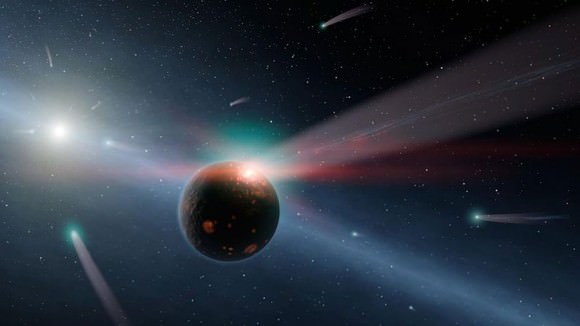
In the early days of the Solar System, there was much more debris around than there is now. The early days would have been a race between planetesimals to gather enough mass to form the planets we see today. After planets were formed, there would still have been plenty of planetesimals left. This new study shows that, rather than clearing the inner solar system from all this debris that could collide with Earth, Jupiter nudged many of these planetesimals towards Earth, helping to create Earth as we know it.
As reported in January 2016 in Astrobiology, Glazier created a simulator of the solar system, and ran 30,000 particles through this simulation. All of the particles began in “non life-threatening” trajectories, but a significant number of them ended the simulation in orbits that crossed the orbit of the Earth.
So not only did Jupiter—and Saturn—re-direct material into the inner Solar System, but the simulation also showed that Jupiter slowed that material to a speed which allowed it to contribute mass to Earth.
But these planetesimals would have contributed more than just mass to Earth. They would have carried volatiles with them. Volatiles are chemical elements and molecules with low boiling points. They are associated with the atmosphere and the crust. These volatiles, which include nitrogen, hydrogen, carbon dioxide, and others, make up a large portion of the Earth’s crust. Without them, Earth would be a very different place. It may never have developed the atmosphere that has allowed life to flourish.
It’s clear that Jupiter has contributed to the evolution of Earth and the Solar System as we know it. As the largest planet by far, its influence is undeniable. As a result of this study, we better understand the dual-role Jupiter has played. While it no doubt has played the role of protector, by changing the direction of some objects on a collision course with Earth, Jupiter’s presence has also been responsible for slowing and diverting planetesimals—and their life-friendly volatiles—directly into Earth.
The Orbit of the Planets. How Long Is A Year On The Other Planets?
Here on Earth, we to end to not give our measurements of time much thought. Unless we’re griping about Time Zones, enjoying the extra day of a Leap Year, or contemplating the rationality of Daylight Savings Time, we tend to take it all for granted. But when you consider the fact that increments like a year are entirely relative, dependent on a specific space and place, you begin to see how time really works.
Here on Earth, we consider a year to be 365 days. Unless of course it’s a Leap Year, which takes place every four years (in which it is 366). But the actual definition of a year is the time it takes our planet to complete a single orbit around the Sun. So if you were to put yourself in another frame of reference – say, another planet – a year would work out to something else. Let’s see just how long a year is on the other planets, shall we?
Continue reading “The Orbit of the Planets. How Long Is A Year On The Other Planets?”
Weekly Space Hangout – Jan. 22, 2016: Dr. Stuart Robbins
Host: Fraser Cain (@fcain)
Special Guest: Dr. Stuart Robbins, Research Scientist at Southwest Research Institute (SwRI); Mars Impact Craters, Science Lead on Moon Mappers and Mercury Mappers.
Guests:
Morgan Rehnberg (cosmicchatter.org / @MorganRehnberg )
Kimberly Cartier (@AstroKimCartier )
Dave Dickinson (@astroguyz / www.astroguyz.com)
Jolene Creighton (@futurism / fromquarkstoquasars.com)
Pamela Gay (cosmoquest.org / @cosmoquestx / @starstryder)
Brian Koberlein (@briankoberlein / briankoberlein.com)
Continue reading “Weekly Space Hangout – Jan. 22, 2016: Dr. Stuart Robbins”
How Long Is A Day On The Other Planets Of The Solar System?
Here on Earth, we tend to take time for granted, never suspected that the increments with which we measure it are actually quite relative. The ways in which we measure our days and years, for example, are actually the result of our planet’s distance from the Sun, the time it takes to orbit, and the time it takes to rotate on its axis. The same is true for the other planets in our Solar System.
While we Earthlings count on a day being about 24 hours from sunup to sunup, the length of a single day on another planet is quite different. In some cases, they are very short, while in others, they can last longer than years – sometimes considerably! Let’s go over how time works on other planets and see just how long their days can be, shall we?
A Day On Mercury:
Mercury is the closest planet to our Sun, ranging from 46,001,200 km at perihelion (closest to the Sun) to 69,816,900 km at aphelion (farthest). Since it takes 58.646 Earth days for Mercury to rotate once on its axis – aka. its sidereal rotation period – this means that it takes just over 58 Earth days for Mercury to experience a single day.
However, this is not to say that Mercury experiences two sunrises in just over 58 days. Due to its proximity to the Sun and rapid speed with which it circles it, it takes the equivalent of 175.97 Earth days for the Sun to reappear in the same place in the sky. Hence, while the planet rotates once every 58 Earth days, it is roughly 176 days from one sunrise to the next on Mercury.
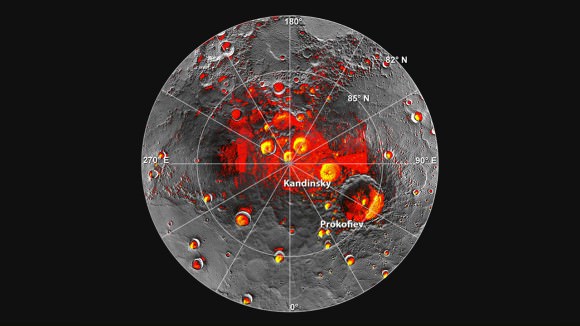
What’s more, it only takes Mercury 87.969 Earth days to complete a single orbit of the Sun (aka. its orbital period). This means a year on Mercury is the equivalent of about 88 Earth days, which in turn means that a single Mercurian (or Hermian) year lasts just half as long as a Mercurian day.
What’s more, Mercury’s northern polar regions are constantly in the shade. This is due to it’s axis being tilted at a mere 0.034° (compared to Earth’s 23.4°), which means that it does not experience extreme seasonal variations where days and nights can last for months depending on the season. On the poles of Mercury, it is always dark and shady. So you could say the poles are in a constant state of twilight.
A Day On Venus:
Also known as “Earth’s Twin”, Venus is the second closest planet to our Sun – ranging from 107,477,000 km at perihelion to 108,939,000 km at aphelion. Unfortunately, Venus is also the slowest moving planet, a fact which is made evident by looking at its poles. Whereas every other planet in the Solar System has experienced flattening at their poles due to the speed of their spin, Venus has experienced no such flattening.
Venus has a rotational velocity of just 6.5 km/h (4.0 mph) – compared to Earth’s rational velocity of 1,670 km/h (1,040 mph) – which leads to a sidereal rotation period of 243.025 days. Technically, it is -243.025 days, since Venus’ rotation is retrograde. This means that Venus rotates in the direction opposite to its orbital path around the Sun.

So if you were above Venus’ north pole and watched it circle around the Sun, you would see it is moving clockwise, whereas its rotation is counter-clockwise. Nevertheless, this still means that Venus takes over 243 Earth days to rotate once on its axis. However, much like Mercury, Venus’ orbital speed and slow rotation means that a single solar day – the time it takes the Sun to return to the same place in the sky – lasts about 117 days.
So while a single Venusian (or Cytherean) year works out to 224.701 Earth days, it experiences less than two full sunrises and sunsets in that time. In fact, a single Venusian/Cytherean year lasts as long as 1.92 Venusian/Cytherean days. Good thing Venus has other things in common With Earth, because it is sure isn’t its diurnal cycle!
A Day On Earth:
When we think of a day on Earth, we tend to think of it as a simple 24 hour interval. In truth, it takes the Earth exactly 23 hours 56 minutes and 4.1 seconds to rotate once on its axis. Meanwhile, on average, a solar day on Earth is 24 hours long, which means it takes that amount of time for the Sun to appear in the same place in the sky. Between these two values, we say a single day and night cycle lasts an even 24.
At the same time, there are variations in the length of a single day on the planet based on seasonal cycles. Due to Earth’s axial tilt, the amount of sunlight experienced in certain hemispheres will vary. The most extreme case of this occurs at the poles, where day and night can last for days or months depending on the season.
At the North and South Poles during the winter, a single night can last up to six months, which is known as a “polar night”. During the summer, the poles will experience what is called a “midnight sun”, where a day lasts a full 24 hours. So really, days are not as simple as we like to imagine. But compared to the other planets in the Solar System, time management is still easier here on Earth.
A Day On Mars:
In many respects, Mars can also be called “Earth’s Twin”. In addition to having polar ice caps, seasonal variations , and water (albeit frozen) on its surface, a day on Mars is pretty close to what a day on Earth is. Essentially, Mars takes 24 hours 37 minutes and 22 seconds to complete a single rotation on its axis. This means that a day on Mars is equivalent to 1.025957 days.
The seasonal cycles on Mars, which are due to it having an axial tilt similar to Earth’s (25.19° compared to Earth’s 23.4°), are more similar to those we experience on Earth than on any other planet. As a result, Martian days experience similar variations, with the Sun rising sooner and setting later in the summer and then experiencing the reverse in the winter.
However, seasonal variations last twice as long on Mars, thanks to Mars’ being at a greater distance from the Sun. This leads to the Martian year being about two Earth years long – 686.971 Earth days to be exact, which works out to 668.5991 Martian days (or Sols). As a result, longer days and longer nights can be expected last much longer on the Red Planet. Something for future colonists to consider!
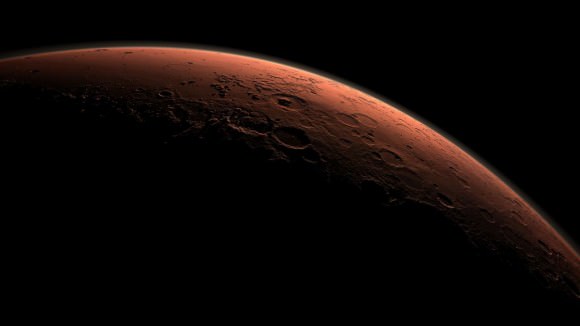
A Day On Jupiter:
Given the fact that it is the largest planet in the Solar System, one would expect that a day on Jupiter would last a long time. But as it turns out, a Jovian day is officially only 9 hours, 55 minutes and 30 seconds long, which means a single day is just over a third the length of an Earth day. This is due to the gas giant having a very rapid rotational speed, which is 12.6 km/s (45,300 km/h, or 28148.115 mph) at the equator. This rapid rotational speed is also one of the reasons the planet has such violent storms.
Note the use of the word officially. Since Jupiter is not a solid body, its upper atmosphere undergoes a different rate of rotation compared to its equator. Basically, the rotation of Jupiter’s polar atmosphere is about 5 minutes longer than that of the equatorial atmosphere. Because of this, astronomers use three systems as frames of reference.
System I applies from the latitudes 10° N to 10° S, where its rotational period is the planet’s shortest, at 9 hours, 50 minutes, and 30 seconds. System II applies at all latitudes north and south of these; its period is 9 hours, 55 minutes, and 40.6 seconds. System III corresponds to the rotation of the planet’s magnetosphere, and it’s period is used by the IAU and IAG to define Jupiter’s official rotation (i.e. 9 hours 44 minutes and 30 seconds)
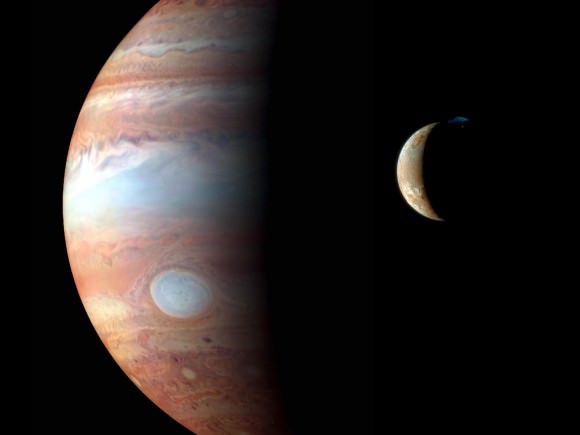
So if you could, theoretically, stand on the cloud tops of Jupiter (or possibly on a floating platform in geosynchronous orbit), you would witness the sun rising an setting in the space of less than 10 hours from any latitude. And in the space of a single Jovian year, the sun would rise and set a total of about 10,476 times.
A Day On Saturn:
Saturn’s situation is very similar to that of Jupiter’s. Despite its massive size, the planet has an estimated rotational velocity of 9.87 km/s (35,500 km/h, or 22058.677 mph). As such Saturn takes about 10 hours and 33 minutes to complete a single sidereal rotation, making a single day on Saturn less than half of what it is here on Earth. Here too, this rapid movement of the atmosphere leads to some super storms, not to mention the hexagonal pattern around the planet’s north pole and a vortex storm around its south pole.
And, also like Jupiter, Saturn takes its time orbiting the Sun. With an orbital period that is the equivalent of 10,759.22 Earth days (or 29.4571 Earth years), a single Saturnian (or Cronian) year lasts roughly 24,491 Saturnian days. However, like Jupiter, Saturn’s atmosphere rotates at different speed depending on latitude, which requires that astronomers use three systems with different frames of reference.
System I encompasses the Equatorial Zone, the South Equatorial Belt and the North Equatorial Belt, and has a period of 10 hours and 14 minutes. System II covers all other Saturnian latitudes, excluding the north and south poles, and have been assigned a rotation period of 10 hr 38 min 25.4 sec. System III uses radio emissions to measure Saturn’s internal rotation rate, which yielded a rotation period of 10 hr 39 min 22.4 sec.

Using these various systems, scientists have obtained different data from Saturn over the years. For instance, data obtained during the 1980’s by the Voyager 1 and 2 missions indicated that a day on Saturn was 10 hours 39 minutes and 24 seconds long. In 2004, data provided by the Cassini-Huygens space probe measured the planet’s gravitational field, which yielded an estimate of 10 hours, 45 minutes, and 45 seconds (± 36 sec).
In 2007, this was revised by researches at the Department of Earth, Planetary, and Space Sciences, UCLA, which resulted in the current estimate of 10 hours and 33 minutes. Much like with Jupiter, the problem of obtaining accurate measurements arises from the fact that, as a gas giant, parts of Saturn rotate faster than others.
A Day On Uranus:
When we come to Uranus, the question of how long a day is becomes a bit complicated. One the one hand, the planet has a sidereal rotation period of 17 hours 14 minutes and 24 seconds, which is the equivalent of 0.71833 Earth days. So you could say a day on Uranus lasts almost as long as a day on Earth. It would be true, were it not for the extreme axial tilt this gas/ice giant has going on.
With an axial tilt of 97.77°, Uranus essentially orbits the Sun on its side. This means that either its north or south pole is pointed almost directly at the Sun at different times in its orbital period. When one pole is going through “summer” on Uranus, it will experience 42 years of continuous sunlight. When that same pole is pointed away from the Sun (i.e. a Uranian “winter”), it will experience 42 years of continuous darkness.

Hence, you might say that a single day – from one sunrise to the next – lasts a full 84 years on Uranus! In other words, a single Uranian day is the same amount of time as a single Uranian year (84.0205 Earth years).
In addition, as with the other gas/ice giants, Uranus rotates faster at certain latitudes. Ergo, while the planet’s rotation is 17 hours and 14.5 minutes at the equator, at about 60° south, visible features of the atmosphere move much faster, making a full rotation in as little as 14 hours.
A Day On Neptune:
Last, but not least, we have Neptune. Here too, measuring a single day is somewhat complicated. For instance, Neptune’s sidereal rotation period is roughly 16 hours, 6 minutes and 36 seconds (the equivalent of 0.6713 Earth days). But due to it being a gas/ice giant, the poles of the planet rotate faster than the equator.
Whereas the planet’s magnetic field has a rotational speed of 16.1 hours, the wide equatorial zone rotates with a period of about 18 hour. Meanwhile, the polar regions rotate the fastest, at a period of 12 hours. This differential rotation is the most pronounced of any planet in the Solar System, and it results in strong latitudinal wind shear.

In addition, the planet’s axial tilt of 28.32° results in seasonal variations that are similar to those on Earth and Mars. The long orbital period of Neptune means that the seasons last for forty Earth years. But because its axial tilt is comparable to Earth’s, the variation in the length of its day over the course of its long year is not any more extreme.
As you can see from this little rundown of the different planets in our Solar System, what constitutes a day depends entirely on your frame of reference. In addition to it varying depending on the planet in question, you also have to take into account seasonal cycles and where on the planet the measurements are being taken from.
As Einstein summarized, time is relative to the observer. Based on your inertial reference frame, its passage will differ. And when you are standing on a planet other than Earth, your concept of day and night, which is set to Earth time (and a specific time zone) is likely to get pretty confused!
We have written many interesting articles about how time is measured on other planets here at Universe Today. For example, here’s How Long Is A Year On The Other Planets?, Which Planet Has the Longest Day?, The Rotation of Venus, How Long Is A Day on Mars? and How Long Is A Day On Jupiter?.
If you are looking for more information, check out Our Solar System at Space.com
Astronomy Cast has episodes on all the planets, including Episode 49: Mercury, and Episode 95: Humans to Mars, Part 2 – Colonists
Understanding Juno’s Orbit: An Interview with NASA’s Scott Bolton
The intense radiation around Jupiter has shaped every aspect of the Juno mission, especially Juno’s orbit. Data shows that there is a gap between the radiation belts that encircle Jupiter, and Jupiter’s cloud tops. Juno will have to ‘thread the needle’ and travel through this gap, in order to minimize its exposure to radiation, and to fulfill its science objectives. Adding to the complexity of the Juno mission, is the fact that the design of the spacecraft, the scientific objectives, and the orbital requirements all shaped each other.
I wasn’t sure what question to start this interview with: How did the conditions around Jupiter, most notably its extreme radiation, shape Juno’s orbit? Or, how did the orbit necessary for Juno to survive Jupiter’s extreme radiation shape Juno’s science objectives? Or, finally, how did the science objectives shape Juno’s orbit?
Scott Bolton, NASA Principal Investigator for the Juno mission to Jupiter. Image Credit: NASAAs you can see, the Juno mission seems like a bit of a Gordian knot. All three questions, I’m sure, had to be asked and answered several times, with the answers shaping the other questions. To help untangle this knot, I spoke to Scott Bolton, NASA’s Principal Investigator for the Juno mission. As the person responsible for the entire Juno mission, Scott has a complete understanding of Juno’s science objectives, Juno’s design, and the orbital path Juno will follow around Jupiter.
Continue reading “Understanding Juno’s Orbit: An Interview with NASA’s Scott Bolton”

